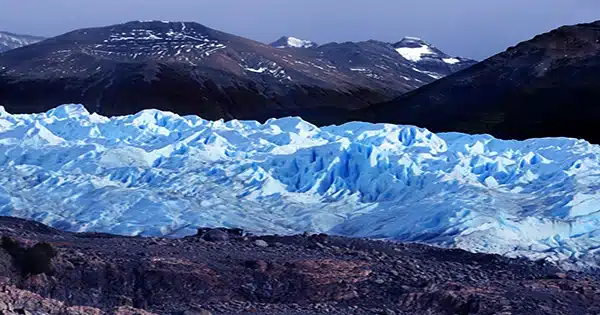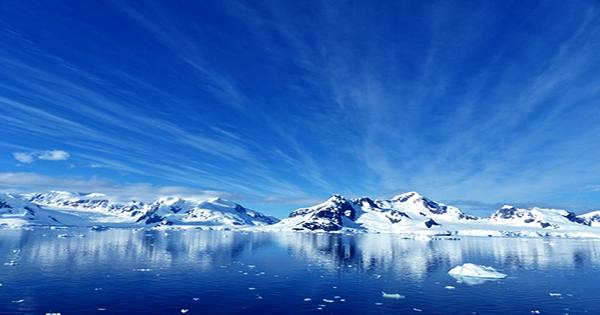There are no flora and hardly any animals here; visitors are few. Large Greenland glaciers have long been thought of being ice deserts. gigantic ice sheets with exceedingly severe living circumstances.
But it appears that we were mistaken now. We underestimated how much life there is on the glaciers.
Researchers from the Department of Environmental Science at Aarhus University, led by Professor Alexandre Anesio, have found that the glaciers are alive with life. microorganisms that can survive on ice. Moreover, there are numerous species. thousands of distinct species.
“A small puddle of meltwater on a glacier can easily support 4,000 different species.” Bacteria, algae, viruses, and tiny fungi are their food. “It’s a whole ecosystem that we had no idea existed until recently,” Alexandre Anesio adds.

What do the microbes live on?
Life’s toughness has regularly shocked scientists during the last 50 years. Life has been discovered many kilometers down, where there is no sunlight or oxygen. Billions of microbes can thrive because they “eat” minerals in the bedrock.
Researchers have demonstrated that life can exist in space. In 2007, European researchers sent a colony of more than 3,000 tiny water bears (tardigrades) into orbit around the Earth. The spacecraft was in orbit for ten days before returning to Earth. Sixty-eight percent of the bacteria survived the vacuum of space and fatal radiation.
“A small puddle of meltwater on a glacier can easily support 4,000 different species.” Bacteria, algae, viruses, and tiny fungi are their food. “It’s a whole ecosystem that we had no idea existed until recently,” Alexandre Anesio adds.
As a result, it should come as no surprise that life exists on glaciers. There is, after all, the sun, oxygen, and water. Nonetheless, until recently, scientists believed that the ice contained insufficient nutrients to support life. But they were mistaken.
There is food available. Alexandre Anesio notes that it is only in extremely tiny doses.
Black algae: Little black algae were one of the microorganisms on the ice that the researchers spent the most time studying. The algae bloom on top of the ice and darken it. There is a reason why biologists are interested in black algae.
“As the ice darkens, it becomes harder to reflect sunlight.” Heat from the sun’s beams is instead absorbed by the ice, which begins to melt. The more ice melts, the warmer the Earth becomes. As a result, algae play a significant part in global warming,” explains Alexandre Anesio.
Larger and larger areas of the ice have become stained by algae in recent years, causing the ice to melt even faster. Alexandre Anesio determined that algae increase ice melt by around 20%.
The algae on the ice existed before humans caused global warming via industrialisation. However, climate change means that spring arrives earlier in the Arctic, giving algae a longer season to grow and spread.
“Every year, the algae spreads a little more.” “I now see vast areas of Greenland where the ice is completely dark because of the algae,” he adds.
Looking for an algaecide
Alexandre Anesio and his colleagues are focusing a lot of attention on the black algae because they want to know if the algae development can be halted in any manner.
There is a delicate balance. Because the various organisms keep each other in check, most ecosystems are in a state of equilibrium. Alexandre Anesio wants to discover more about the interactions between bacteria.
“The many microbes on the ice interact with one another. Some people abandon nutrients that others rely on. Bacteria are attacked and consumed by little virus particles. Some of the fungal spores may devour the black algae, we suspect. “This is what we’re after,” he says.
He emphasizes, however, that even if they do find a means to reduce algae growth, this would not solve climate change. It may, however, slow it down.
Algae development is a result of humans emitting too much greenhouse gases into the atmosphere. And it is here that the problem must be addressed. We must concentrate on reducing our emissions.
The same pigment that is found in black tea: Algae may be found almost anywhere. In the sea, on trees and rocks, and even as tiny spores in the air. The majority of algae are greenish. They are green because of chlorophyll, just like plants and trees. They have a chemical that allows them to photosynthesise.
The situation is different with black algae.
“Because algae live on ice, they are constantly bombarded with sunlight and radiation.” They create a lot of black pigment to defend themselves. It’s the same pigment found in black tea. “The pigment forms a protective layer outside the algae, protecting the chlorophyll molecules from harmful radiation,” explains Alexandre Anesio. Heat is produced as the pigment absorbs the sun’s light. The heat melts the ice that surrounds the algae. This is beneficial to the algae. To survive, they require both water and micronutrients from the ice.
Furthermore, they can only use the water when it is liquid.
NASA also has an eye on his research
Alexandre Anesio’s research on ice life is critical to a better understanding of climate change. NASA, on the other hand, is keeping a careful eye on its study findings. The findings might be critical in the search for life in space.
“NASA has approached us several times because we work with life that lives in one of the most hostile environments on the planet.” “If life thrives on and beneath the ice, there’s a chance we’ll find life in the ice on Mars or Jupiter’s and Saturn’s ice moons, for example,” he adds.
NASA even asked Alexandre Anesio to a conference before sending its Perseverance rover to Mars.
“They were concerned that the rover would bring microbes from Earth with it.” Microbes that may thrive on Mars and taint the samples they planned to collect. As a result, they were curious about the conditions under which life might persist. “What are the limits of life?”
NASA is particularly interested in studying life in the ice because no other planets in our solar system have liquid water. At least not yet. But we’ve discovered plenty of ice.
However, there is evidence that liquid oceans exist beneath the frozen surface of Saturn’s moon Enceladus and Jupiter’s moon Europa—and liquid water is one of the necessities of life as we know it.
As a result, NASA and other space organizations are keen to learn more about the types of life that can exist on and beneath the ice. Because species that mimic those found in Greenland are likely to be found on the ice moons.















